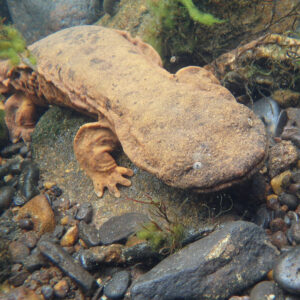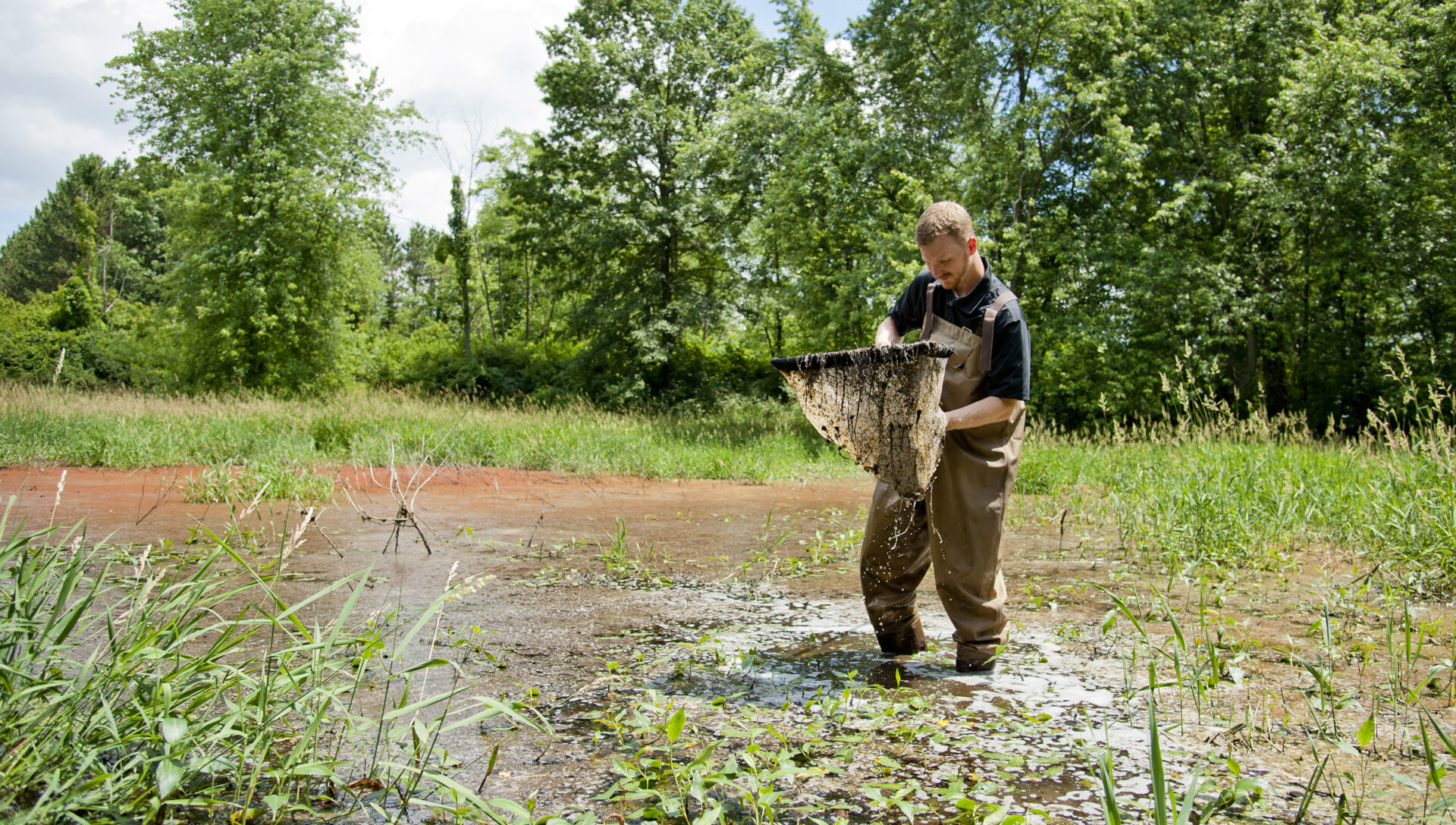Hellbender Conservation
 Eastern hellbenders are the largest salamander in North America. Adults are capable of reaching 29 inches in length; however, most individuals are typically 11-24 inches long. Hellbender populations are declining across their range, from Missouri to New York. This decline, which affects the hellbender population in Indiana’s Blue River, is likely caused by human influences such as habitat degradation and destruction. The stream-bottom habitat of hellbenders can be degraded by sediment from eroded banks and fields and destroyed when streams are dammed or dredged. Hellbenders are also captured inadvertently by anglers or purposefully for illegal sale in the pet trade. Finally, emerging diseases may be impacting some populations of hellbenders. Specifically, the chytrid fungus (Batrachochytrium dendrobatidis) and Ranavirus (family Iridoviridae) are considered to be major threats to the persistence of hellbender populations across their range.
Eastern hellbenders are the largest salamander in North America. Adults are capable of reaching 29 inches in length; however, most individuals are typically 11-24 inches long. Hellbender populations are declining across their range, from Missouri to New York. This decline, which affects the hellbender population in Indiana’s Blue River, is likely caused by human influences such as habitat degradation and destruction. The stream-bottom habitat of hellbenders can be degraded by sediment from eroded banks and fields and destroyed when streams are dammed or dredged. Hellbenders are also captured inadvertently by anglers or purposefully for illegal sale in the pet trade. Finally, emerging diseases may be impacting some populations of hellbenders. Specifically, the chytrid fungus (Batrachochytrium dendrobatidis) and Ranavirus (family Iridoviridae) are considered to be major threats to the persistence of hellbender populations across their range.
Conservation Efforts
Many states are developing conservation programs to help the hellbender. These conservation initiatives are diverse and consist of captive breeding and head-starting programs, education programs that promote awareness, increased protection through state and federal regulations, and strong research collaborations between academic institutions and government agencies (Hellbender Conservation, Hellbender Public Attitudes, and Hellbender Repatriation). Most recently, the Ozark hellbender subspecies, C. a. bishopi, was given protection as federally-listed endangered species.
For more information view the Help the Hellbender – Conservation Efforts.


